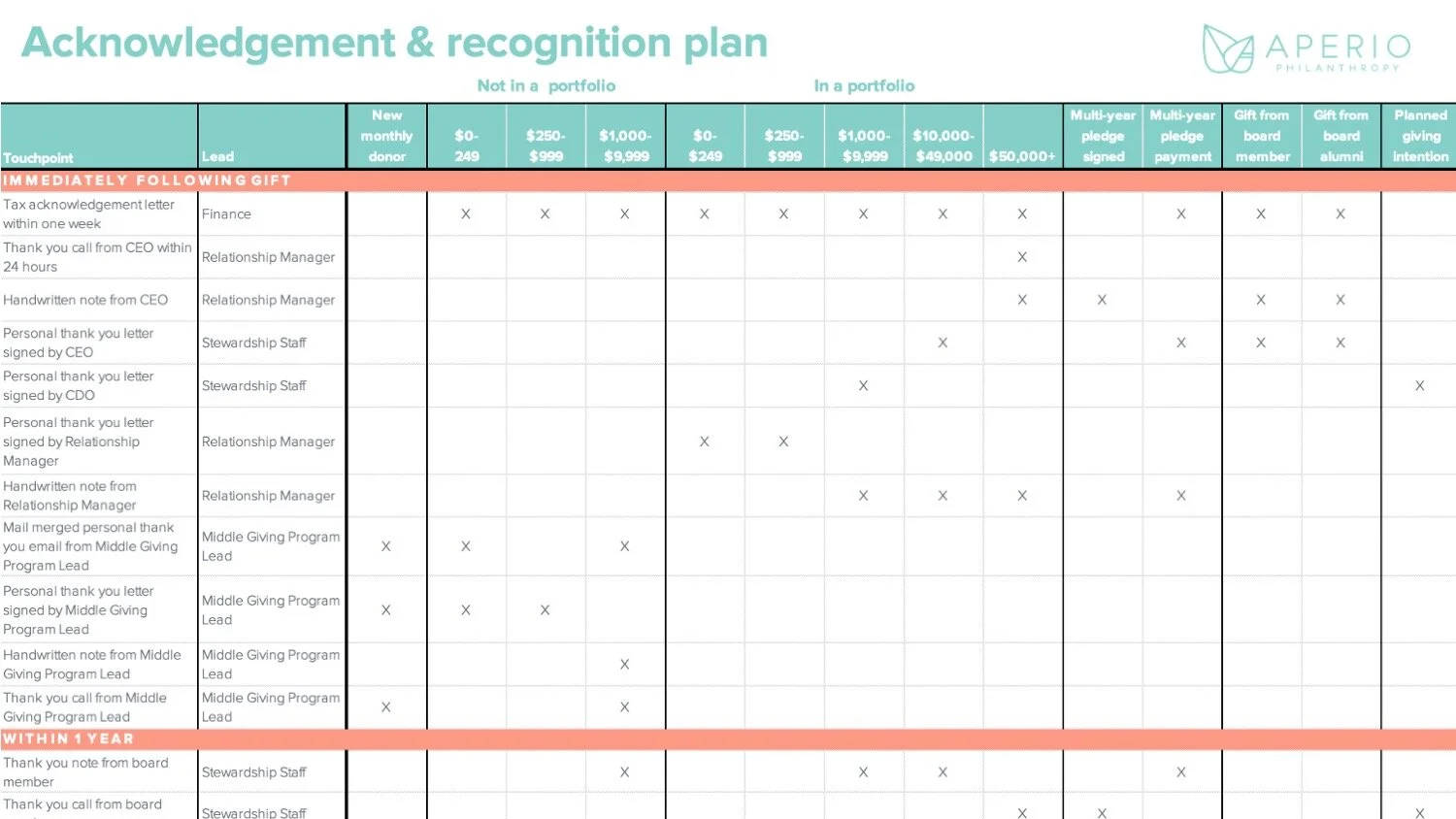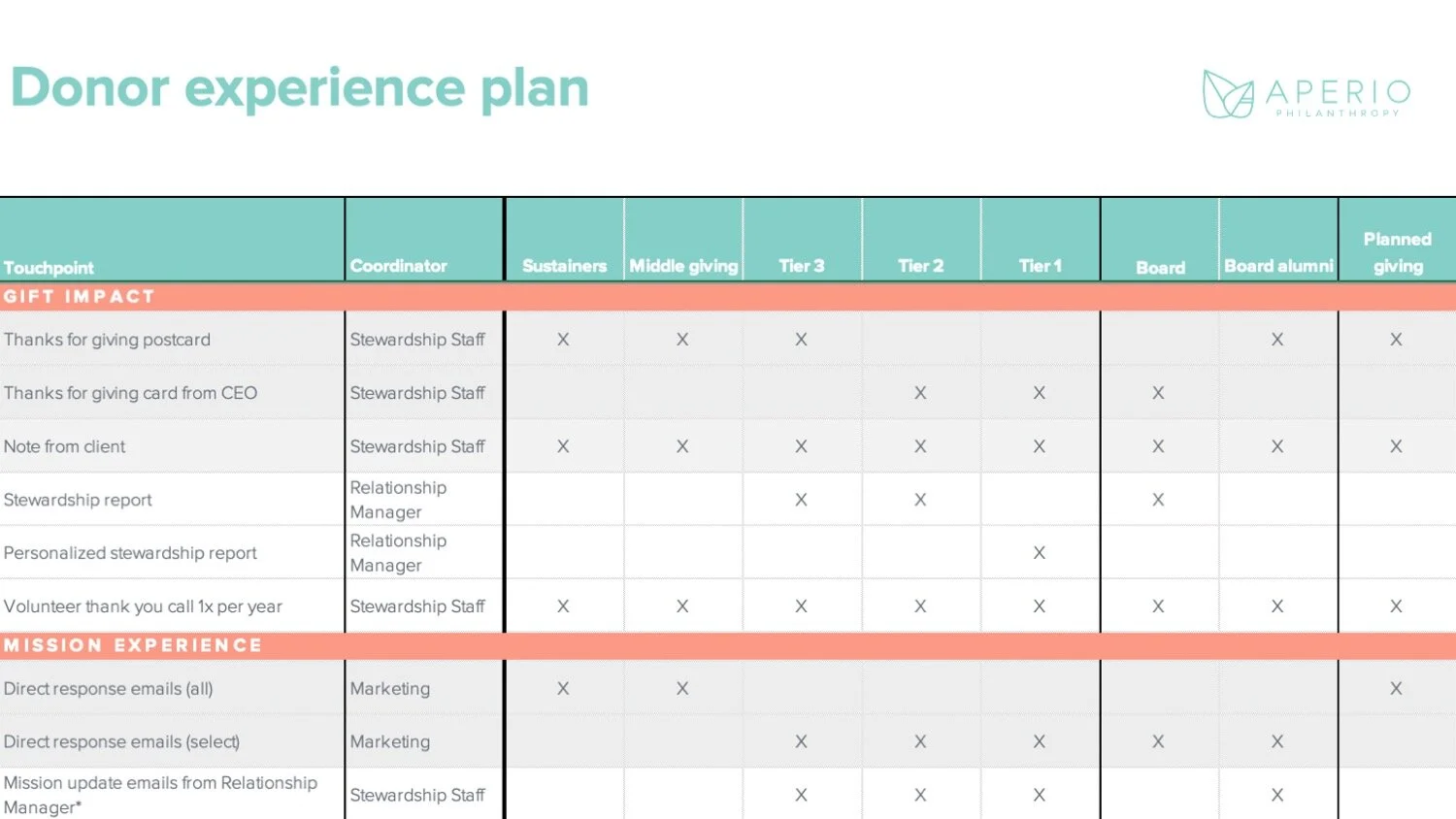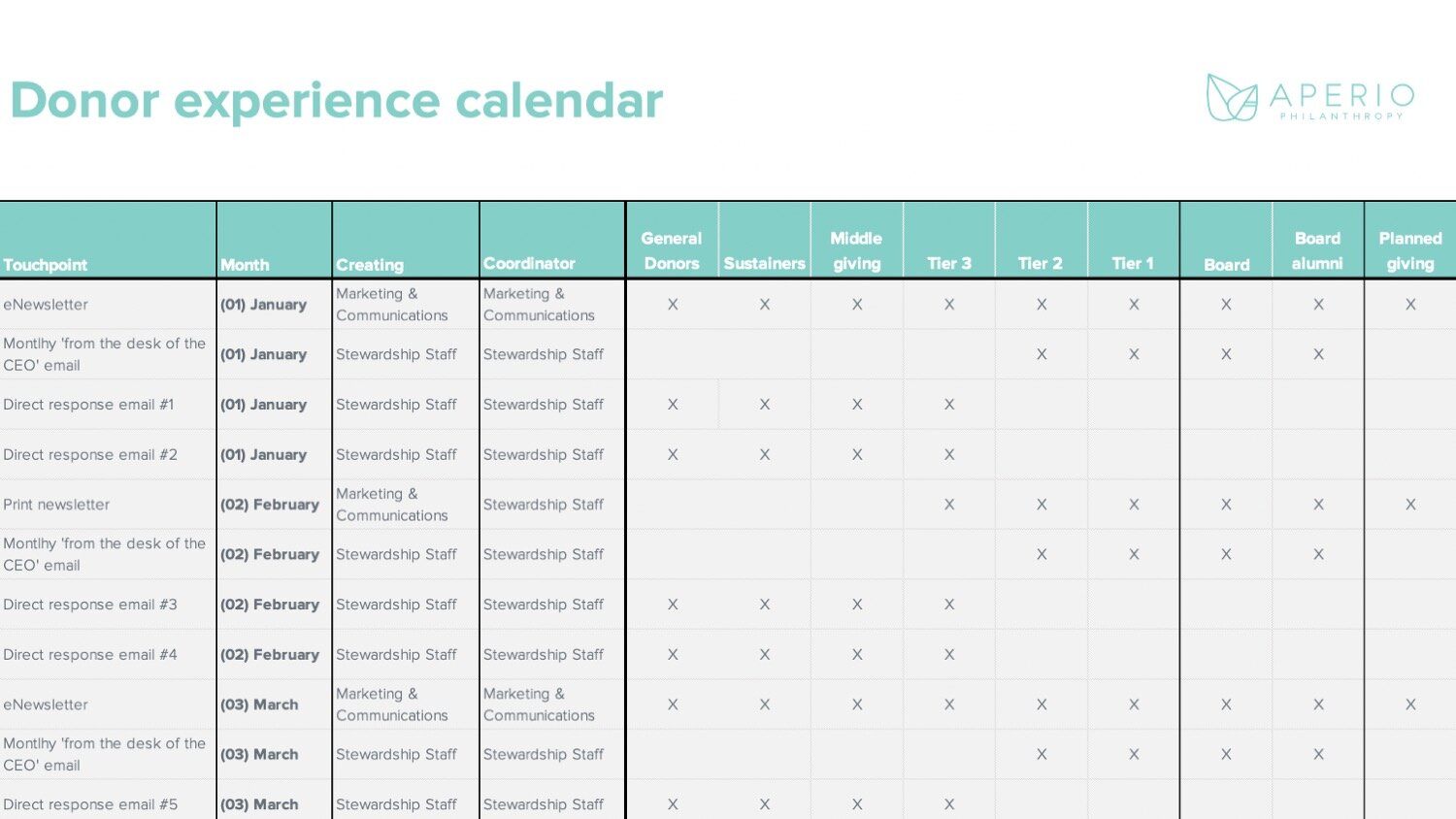Summer reset #3: Create your engagement plan
Stewardship is a word we use so much that it has come to mean both everything…and nothing.
We overuse it for a reason: We know that it matters to donors and to our fundraising growth.
Even though we all agree it’s important, stewardship is also the ‘to do’ that always seems to slide down our list. There’s always something more urgent to tackle.
It doesn’t have to be that way. Stewardship can be simple.
With a little upfront organization and collaboration, stewardship can be both turnkey and effective, creating an exciting and inspiring experience for your donors.
Last week, we wrapped up our Summer Reset webinar series with an overview of how to create a donor engagement plan.
Follow along with this recording of our webinar last week or the recap below.
For additional support…
Defining stewardship
Our definition of stewardship is: the culture, practices and processes that provide every donor a meaningful experience that grows their relationship, engagement, and giving over time.
Notice the three pieces of that definition:
First, stewardship is something we do. It is a combination of culture, practices, and processes that we build with intention.
Second, stewardship has a clear purpose: to provide every donor a meaningful experience.
Third, stewardship’s ROI is in the growth of our relationship with a donor, as well as their giving and engagement over time.
At Aperio, we tend to use the word ‘engagement’ rather than stewardship for two reasons:
It reflects that we are talking about the full donor cycle—both cultivation prior to a gift and stewardship after a gift.
It stresses our belief that cultivation and stewardship serve donors best when they are interactive—or genuinely engaging—rather than an organization simply talking at donors.
Getting started
As you get started, consider: What is motivating you to create your engagement plan now?
What are you trying to achieve?
Consider convening a small cross-functional working group that includes fundraising, marketing & communications, program, leadership, etc. Discuss the opportunity you see. Ask your colleagues how investment in this area will help them achieve their objectives.
Marketing & communications colleagues may be excited to pursue new purposes and audiences for their content. Program staff may look forward to elevating the voices of those they serve and securing more investment in priority programs. Leadership may appreciate a more strategic, streamlined approach to engaging them in donor relationships.
With a strong overall vision, as well as value-add for all stakeholders, you’ll be on your way to a strong engagement plan.
Consider defining internal goals, such as to create a program that ensures:
No donor falls through the cracks
All donors are treated well (but not necessarily equally)
Everyone on the team knows their part and is playing it
And add on external goals, such as ensuring that every donor feels:
My gifts are being used well (and as I intended)
My partnership makes a difference
I see a role in the future of this mission
Once you have your goals in place, segment your list. Refer to our previous webinar and step-by-step guide for detailed instructions.
Catalog your assets
Before you get into the nitty-gritty of planning, take some time to get creative. Pull together your colleagues for a brainstorming session.
Set aside practical considerations for this conversation. Don’t think about what you did in the past or how, when, where, who, etc. you would implement ideas in the future.
Just make the most comprehensive list you can imagine by answering the following questions:
What are all the ways we can acknowledge & thank a donor for their giving?
What are all the ways we can recognize & celebrate their generosity?
What are all the ways we can show them the impact of their gift?
What are ways we can help them experience the mission firsthand?
What are all the ways we can connect them to our community and create a sense of belonging?
Take good notes. These ideas will serve you for years to come!
Create your framework
Now, it’s time to plan.
Your stewardship or engagement plan will have two pieces:
An acknowledgement & recognition plan, in which we map out what a donor should receive based on their gift size this year
A donor experience plan, in which we add on more experiences, based on a donor’s segment—or potential for future growth
Acknowledgement & recognition plan
When we talk about acknowledgement, what picture comes to mind?
For most of us, it’s the tax letter. As fundraisers, we tend to place a lot of importance on getting the perfect letter to everyone—and we spend a lot of time customizing letters.
As you create a framework for acknowledgement letters, we recommend that you:
Simplify your approach to tax letters so that you can get them out as quickly as possible.
Go beyond the tax letter and layer on additional touchpoints.
Think about acknowledgement and recognition as intertwined and on a longer time-frame than the weeks following a gift.
Your acknowledgement plan is your organization’s comprehensive reaction to a gift. Think about how you treat a donor at an event. How can you bring that same level of acknowledgement and recognition to donors who give directly to your mission as well?
As you create your plan, consider these ideas:
Try to get your acknowledgement letter out within a week. Have a template that you use for everyone. Mix it up every couple of months. Make it short, warm, and inspiring.
Do an additional thank you touchpoint for your larger donors. Here’s where your personalized letters, handwritten notes, and phone calls come in.
Do a midyear thank you for top donors. This is a great way to engage your board – every month or so, give each one a stack of cards to sign or a list of donors to call. Make it easy and make it fun.
Within a year of a gift, deliver any recognition touchpoints you promise to larger donors, such as naming opportunities, donor walls, names in an annual report, listings on websites, etc.
When you have your plan together, map it out into this acknowledgement plan like a benefits matrix.
Donor experience plan
As you develop your stewardship plan, remember: Acknowledgement and recognition alone are not the full picture. To fully engage a donor and inspire ongoing, growing support, we need experiences.
We need to bring the donor opportunities to:
See the impact of their giving
Experience the mission first-hand
Connect with the community and feel a sense of belonging
A few things to keep in mind:
As we craft this part of the plan, we are thinking back to that why we defined in the first webinar and asking ourselves: How can we connect donors that why?
Not every donor will take you up on all your offers, but it is important that all receive the opportunity.
Reserve the most time/resource-intensive opportunities for your highest-potential donors to ensure you will see high ROI.
To create the donor engagement plan, we’re going to marry our ‘catalogue or assets’ we created with our segments.
First, create the plan in a matrix, similar to how you set up your acknowledgment & recognition plan. However, this time, instead of current giving levels across the top, put your donor segments. The reason for the switch is that…
When we work on acknowledgement & recognition, we’re thinking of exclusivity—reserving special touches for our largest donors.
When we work on donor experiences, we’re thinking of inclusivity—bringing as many potential donors into the family as we can, while ensuring efficiency and high ROI on resource/time-intensive touchpoints.
Second, convert your matrix into a calendar. This calendar is shared among departments. It includes ALL communications, events, and experiences and then spells out who will receive them.
Here you can really see the value of segmentation: It’s much easier to make plans by donor group rather than having to recreate your lists every time you have a new touchpoint to offer.
Getting going
Congratulations. You’ve take a big leap forward in getting all your plans on paper.
Now, finish the process with the two final steps:
‘Operationalize’ your plan, meaning: Define who, what, when, how, etc. everything will be done.
Roll the plan out to your team, ensuring everyone is very clear on roles and responsibilities. See the webinar recording for additional tips on integrating your new plan with moves management for top donors.
A few final lessons learned from our experience…
Start simple. You have your big catalogue of assets now, so you can always add in touchpoints. But start with what you can feasibly deliver and deliver well.
Meet as a team at least monthly to walk through upcoming touchpoints and to work out any logistics.
Use anything you create as broadly as possible. Don’t reinvent the wheel. Tweak the delivery for top donors if needed.
Most importantly, do not suppress your top donors from your email program! Rather, coordinate with marketing & communications to curate which ones they receive. You have too much opportunity in your database to create a duplicate communications function for major gifts.
We look forward to hearing about your creative ideas and the new ways you’re bringing your why to life for your donors.
Need help? Contact us. We’ll roll up our sleeves and help you get going.






